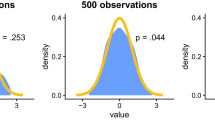Abstract
This paper discusses the issues related to the accuracy of performance prediction tools for message passing programs. We present the results of two sets of experiments to quantify the effect of the instrumentation overhead and variance in the accuracy of Dimemas. The results show that this performance prediction tool can be used with a high level of confidence as the effect of instrumentation overhead on the predicted performance is minimal. We also show that it is possible to carry out instrumentation runs in highly loaded multi-user environments and still be able to accurately analyze the performance of the application as if it had run alone.
Similar content being viewed by others
References
R. Aversa, A. Mazzeo, N. Mazzocca and U. Villano. Heterogeneous system performance predictionand analysis using PS. IEEE Concurrency, 6(3):1996.
E. Ayguade, X. Martorell, J. Labarta, M. Gonzalezand N. Navarro. Exploiting parallelism through directives on the nano-threads programming model. Proc. of the 10th International Workshop on Languages and Compilers for Parallel Computing. Minneapolis, USA, August 1997.
T. Fahringer. Estimating and optimizing performance for parallel programs. Computer, 47-56, 1995.
A. Ferscha. A Petri net approach for performance-oriented parallel program design. J. Parallel and Distr. Computing, 15(3):188-206, 1992.
S. Girona, T. Cortes and J. Labarta. Analyzing scheduling policies usingDIMEMAS. Parallel Computing, 23:23-34, 1997.
H. Jonkers. Queueing models of parallelapplications. The Glamis methodology. Proc. Seventh Intl Conf. Modeling Techniques and Tools, Lecture Notes in Computer Science, Springer-Verlag, pp. 123-138, 1994.
J. Labarta, S. Girona, V. Pillet, T. Cortes and L. Gregoris.DiP: A parallel program development environment. 2nd International Euro-Par Conference (Euro-Par'96), Lyon, France, August 1996.
J. Miguel, R. Beivide, A. Arruabarrena and J. A. Gregorio. Assessing the performance of the newIBM SP2 communication subsystem. IEEE Parallel & Distributed Technology, 4(3):12-22. 1996.
PallasGmbH. Vampir 2.0-Visualization and Analysis of MPI Programs. http://www.pallas.com, 1999.
D. A. Reed etal. Scalable performance analysis: The Pablo performance analysis environment. Proc. IEEE Scalable Parallel Libraries Conf. IEEE Service Center, Piscataway, NJ, 1993.
J. Yan, S. Sarukkaki and P. Mehra. Performancemeasurement visualization and modeling of parallel and distributed programs using the AIMS toolkit. Software Practice and Experience, 25(5):429-461, 1995.
Author information
Authors and Affiliations
Rights and permissions
About this article
Cite this article
Girona, S., Labarta, J. Sensitivity of Performance Prediction of Message Passing Programs. The Journal of Supercomputing 17, 291–298 (2000). https://doi.org/10.1023/A:1026567408307
Issue Date:
DOI: https://doi.org/10.1023/A:1026567408307




